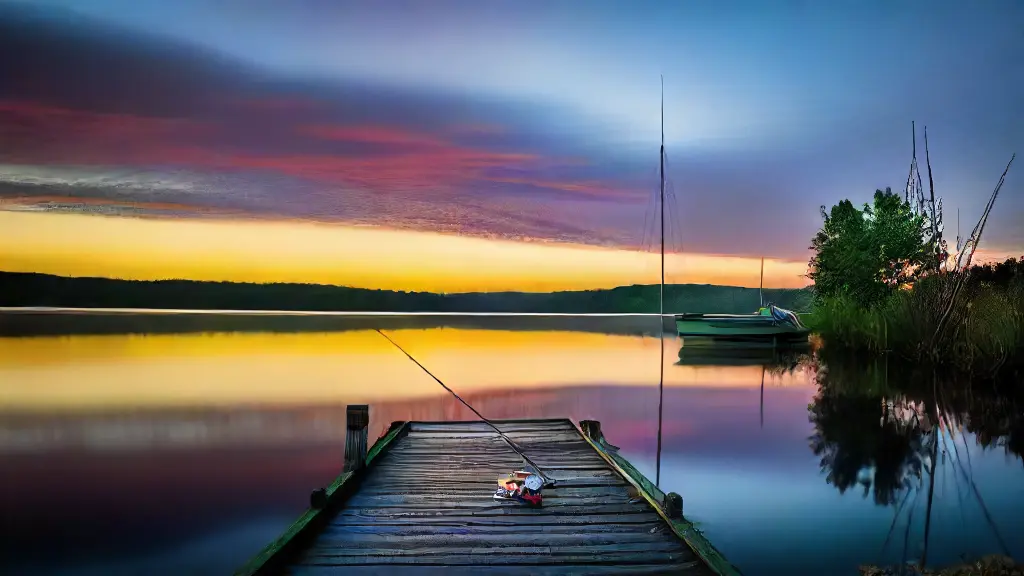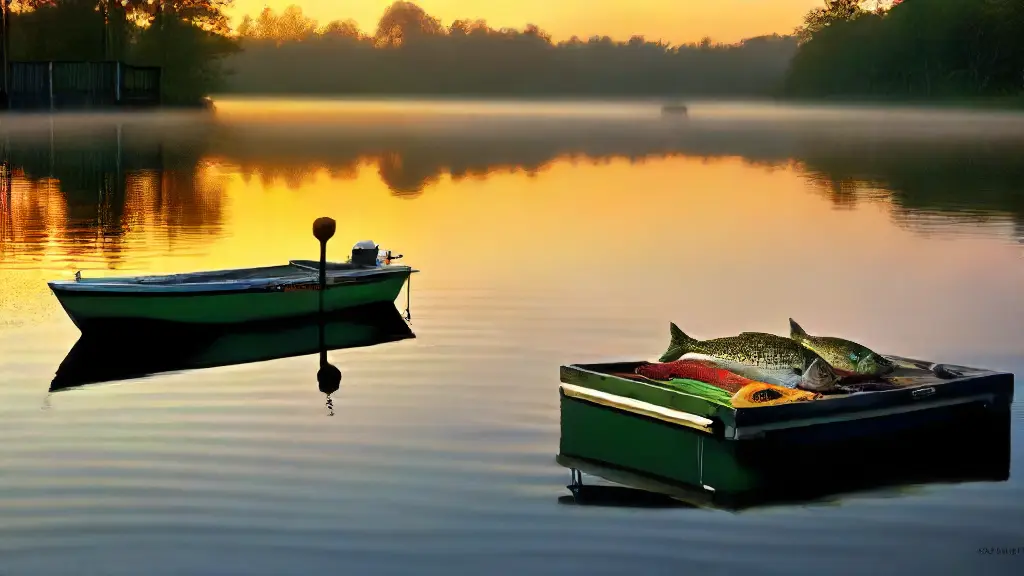Best Colors for Panfish Lures

When it comes to reeling in the perfect catch, colors play a crucial role in attracting panfish species. For the most successful fishing expedition, a keen understanding of panfish habits and the colors that effectively lure them is vital.
The blues and yellows of a sun-kissed sunset, the greens of a lush aquatic environment, and the whites of a fluffy cloud all hold the key to tantalizing the taste buds of bluegill, crappie, and walleye.
In this guide, we’ll delve into the best colors for panfish lures, highlighting the most effective hues for various species.
By selecting the right color palette, you’ll increase your chances of landing a bountiful catch. Whether you’re a seasoned angler, choosing the right panfish fishing lure and colors can actually help you catch the species you’re after, such as trout, bass, bluegill, sunfish, crappie, or walleye.
What Colors Catch Panfish
As the boat glides across the serene aquatic surface, a subtle understanding of panfish color preferences can mean the difference between a day of boredom and a day filled with excitement. Yellow hues tend to dominate the underwater world of panfish, with many species exhibiting a strong affinity for these vibrant colors.
Perch, in particular, are drawn to the warm tones of yellow, often congregating around structures that feature these colors.
While it’s easy to assume that panfish are attracted to bright, bold colors, the truth is that they’re often more discerning in their color preferences.

Panfish Lure Color Selection
The art of selecting the perfect lure color for panfish fishing is a delicate balance of strategy and instinct. what color will tantalize those finicky fish and lead to a rewarding catch?.
Choosing the Perfect Lure Color for Panfish
- Research suggests that panfish are more likely to be attracted to lures with a yellow or orange color, as these hues closely match the natural colors of their favorite foods.
- The clarity of the water can also play a significant role in determining the best lure color, with brighter colors often working better in clear water and duller colors working better in murky water.
- Some panfish species, such as bluegill and redbreast sunfish, have a strong preference for certain lure colors, making it important to choose a lure that is specific to the species you are targeting.
- Experimenting with different lure colors and observing the reactions of the fish can help you develop your own instincts for what colors work best in different situations.
Why Colors Matter Lures
As anglers prepare to cast their lines, they often underestimate the significant impact color can have on their lure’s effectiveness. With the right hue, a lure can become an irresistible magnet for fish, while the wrong one can leave it collecting dust in the tackle box.
Panfish Species Color Preferences
The world beneath the waves is a colorful place, but for panfish, it’s a totally different ball game. Unlike many other fish species, panfish have a unique visual system that allows them to perceive colors in a way that’s not fully understood by humans.
Understanding Color Vision in Panfish
b.
Unique Biological Structure of Panfish Eyes
One of the key components of panfish color vision is the absence of a retinal pigment in the rods of their eyes, which allows them to detect even the slightest changes in light reflectance.
This biological structure also enables panfish to see underwater in a way that’s unparalleled by other fish species.
How Panfish Perceive Color
When it comes to color perception, panfish see the world in a different way, casting a more profound influence on their behavior and survival. Since minnows are attracted to the cracker bait on the hook.
Unique Aspects of Panfish Color Vision
- Panfish lack a retinal pigment in their rods, allowing them to detect even slight changes in light reflectance.
- Panfish can see underwater in a way unparalleled by other fish species due to their unique biological structure.
- Panfish perceive color differently, which has a profound influence on their behavior and survival.
- Minnows are attracted to cracker bait on a hook, demonstrating the impact of panfish color vision on their behavior.
Color Patterns for Trout
The art of fly fishing is a delicate balance of precision, patience, and understanding the intricacies of trout behavior and visual preferences. In the world of trout fishing, color patterns play a vital role in enticing these finicky predators.
Insects are an essential food source for trout, and fly patterns that closely mimic these insects can be highly effective.
When identifying and mimicking natural insects, it’s essential to consider the colors used in the fly pattern and lure.
Some common colors used in fly patterns and lures include olive, brown, and tan, which are the natural colors of many aquatic insects.
The construction of a fly pattern that accurately imitates a natural insect requires careful attention to detail, particularly when it comes to the colors used. The presentation of the fly, including its color pattern, can greatly impact its performance and ability to attract trout with optimal vibration, action, movement, and strength.
Lure Colors for Bluegill
As you wade into the serene waters, anticipation builds with every carefully crafted cast, seeking the perfect bite from the feisty bluegill.
When selecting the right lure colors for bluegill, it’s essential to consider the water’s clarity, structure, and the time of day.
A lure’s color plays a significant role in attracting these panfish, and a wrong choice can lead to a disappointing catch.
To increase your chances of reeling in a trophy bluegill, it’s crucial to understand which lure colors perform best in different scenarios.
In murky waters, bluegill are more likely to respond to dark-colored lures, such as black, blue, or dark green. These colors help the lure stand out against the murky backdrop, increasing its visibility to the fish. On the other hand, in clear waters, bluegill are often more attracted to the slow retrieve and subtle angle of a baitcast setup with a reel seat of small diameter, paired with a handle that minimizes storage and maintenance.
Bluegill Lure Color Selection Tips
- In murky waters, bluegill are more likely to respond to dark-colored lures, such as black, blue, or dark green.
- In clear waters, bluegill are often more attracted to the slow retrieve and subtle angle of a baitcast setup with a reel seat of small diameter, paired with a handle that minimizes storage and maintenance.
- A lure’s color plays a significant role in attracting bluegill, and a wrong choice can lead to a disappointing catch.
- When selecting the right lure colors for bluegill, it’s essential to consider the water’s clarity, structure, and the time of day to increase your chances of reeling in a trophy bluegill.
Best Colors for Walleye Lures
A well-stocked tackle box requires regular cleaning to ensure the longevity of its components, but the right lure colors can also make all the difference in a successful walleye fishing trip.
Choosing the right colors for walleye lures can make or break an angler’s outing.
Understanding the importance of color selection in panfish lures can make all the difference between a successful catch and a long day on the water.
Understanding the importance of color selection, it’s clear that the colors used on a lure can influence the effectiveness of the presentation, with certain colors more visible than others in different water conditions.
Identifying the primary factors influencing color selection is crucial, as water clarity, sunlight, and the presence of weeds or structure all play a role in determining the most effective lure colors. In clear water, a subtle lure color like white or chrome can be highly effective.
Do Colors Affect Panfish Catch
When it comes to reeling in panfish, the right combination of tackle and technique is crucial, and the color of your lure is a vital component in this equation.
Panfish have a unique way of responding to different lure colors, and understanding this connection can significantly improve your success rate. By exploring how panfish react to various colors under different conditions, you can develop a strategy that works best for you.
With the right supplies, you’ll be well-equipped to tackle the challenge.
In addition to the bait itself, factors such as water clarity, depth, and time of day can influence panfish behavior and reaction to lure colors.
As you fine-tune your approach, consider the materials you’re using and how they might impact the presentation of your lure. By doing so, you’ll be better prepared to make the most of your equipment, supplies, materials, and treatment through proper coating, protection, preservation, conservation, disposal, recycling, and repurposing.
Facts About Panfish Lure Colors
- Panfish respond to lure colors in a unique way, and understanding this connection can significantly improve your success rate.
- Factors such as water clarity, depth, and time of day can influence panfish behavior and reaction to lure colors.
- The presentation of your lure can be impacted by the materials you’re using, and fine-tuning your approach can make a big difference in your results.
- Considering the right combination of tackle, technique, and lure color can increase your chances of reeling in panfish.
Using Scented Baits for Panfish
Casting Accuracy Tips for Panfish Fishing


